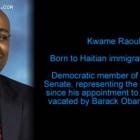ADVERTISEMENT
Emperor
Francois Duvalier and Haile Selassie Emperor of Ethiopia
Here is a picture of Francois Duvalier and Haile Selassie Emperor of Ethiopia.
Haile Selassie I (23 July 1892-- 27 August 1975), a member of the Solomonic dynasty was the Emperor of Ethiopia from 1930 to 1974. He was also known as the King of Kings. He served as the Chairperson of the Organisation of African Unity. His internationalist view helped Ethiopia to become a charter member of the United Nations. He helped to promote multilateralism and collective security and in 1936, at the League of Nation, he condemned the use of chemical weapons by Italy against Ethiopia. His millions of supporters of Rastafari movement (an Abrahamic belief) used to worship him as the returned messiah of the Bible. This King of Kings met the President for Life, when he visited Haiti in April 1966. He was the only foreign Head of State to visit Haiti during the rule of Francois Duvalier (Papa Doc). Like Haile Selassie, President Duvalier was also a patron of the Black Nationalist platform, and a supporter of the Pan-African model of excellence.
Faustin Soulouque as Emperor of Haiti, Faustin I
Here is the Emperor of Haiti, Faustin Soulouque as Faustin I. A former career officer and general in the Haitian Army, was proclaimed Emperor of Haiti under the name Faustin I.
Once Soulouque had conquered the Boyerists he decreed himself Emperor Faustin I with Parliament's approval. In office, he adopted an attitude of suspicion toward Black leaders he thought were conspiring against him.
Faustin's foreign policy was to protect Haiti and Santo Domingo from foreign interference. He tried without success to annex Santo Domingo to unify the island of Hispaniola. Defeated after his final attempt he came back to Port-au-Prince. He was losing power, with no progress being made in Haiti, and his reputation as a merciless dictator furthered his decline.
In 1858 Fabre Geffrard managed a coup d'etat and became president. Faustin went into exile in Kingston, Jamaica where it was widely reported he died. But Haitian historian MacLeod writes Faustin actually died in Petit-Goâve.
Crown of Emperor Faustin I, Faustin-Élie Soulouque
Here is the Crown of Emperor Faustin I, as Faustin-Élie Soulouque was proclaimed Emperor of Haiti under the name Faustin I in 1849
Faustin Soulouque came to power as Haiti's president in 1847 when the mulatto-elite Boyerists recruited him after President Riche passed on. He was seen as old, lacking authority, and weak-willed. But the Boyerists were proven wrong when Soulouque, after bowing to their authority, staged an overthrow, was appointed president, and quickly set about massacring them.
Soulouque was born as a slave circa 1782 in Petit-Goâve, but became a freed man later. To assure his freedom, because the French were trying to force slavery on the Haitians again, he joined the Black revolutionary army. He was part of the revolt driving the French out of Haiti, staying in the military until the unsuspecting Boyerists selected him as president.
The coronation of Faustin I - Ceremony, Faustin Soulouque
Here is a picture of the coronation of Faustin I. In 1849, Faustin Soulouque was proclaimed Emperor of Haiti under the name Faustin I.
Soulouque ascended the ranks of the Haitian military over the next forty years, ending up as Lieutenant General and Supreme Commander of the Presidential Guards. When President Riche passed away in 1847 the Boyerist ruling class needed another figurehead as president. They picked Soulouque, thinking he was unintelligent and ill-informed. Soulouque did their bidding at first but turned on them and declared himself a dictator. He began a campaign of genocide against the mulatto-elites, and in 1849 Parliament decreed Soulouque Emperor of Haiti, Faustin I. Three years later he and his wife Adelina were crowned Emperor and Empress.
Faustin protected Haiti's sovereignty from foreign threats and unsuccessfully tried to divest the Dominican Republic of theirs. In 1846 military leader Fabre Geffrard staged a coup d'etat, driving Faustin into exile, becoming the next president. Faustin was exiled to Kingston, Jamaica and many believed he died there. But historian Jacques Leger claims Faustin died in Petit-Goâve, having snuck back into the country.

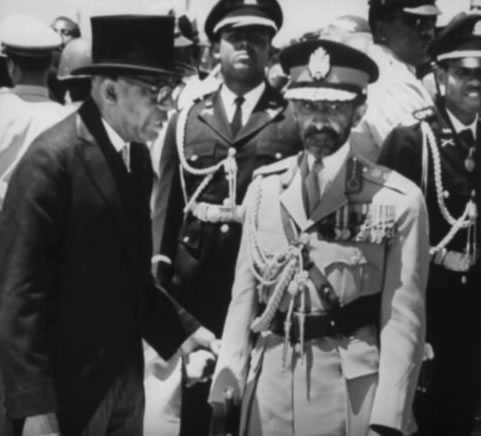
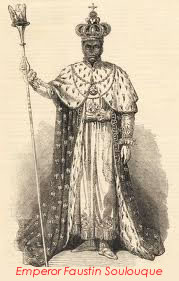
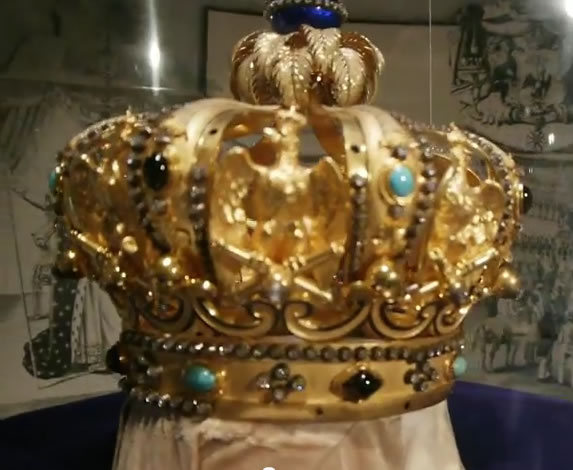
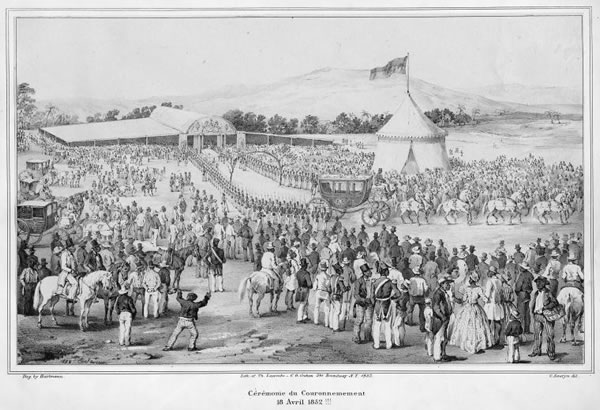
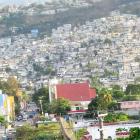 Petion-Ville, Haiti
Petion-Ville, Haiti 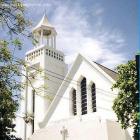 Nouveau College Bird in Port-au-Prince, Haiti
Nouveau College Bird in Port-au-Prince, Haiti  Who will be the next president of Haiti?
Who will be the next president of Haiti?  Partial list of privileges enjoyed by Government officials in...
Partial list of privileges enjoyed by Government officials in... 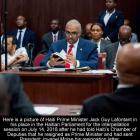 Jack Guy Lafontant resigns as Haiti Prime Minister
Jack Guy Lafontant resigns as Haiti Prime Minister  Jovenel Moïse nominated Jean Henry Céant as prime minister of...
Jovenel Moïse nominated Jean Henry Céant as prime minister of...  Haiti Street Food, manje kwit or Chin Janbe, for $1 or less
Haiti Street Food, manje kwit or Chin Janbe, for $1 or less 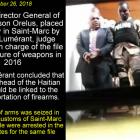 Former PNH Chief, Godson Orelus, arrested for illegal arm...
Former PNH Chief, Godson Orelus, arrested for illegal arm... 

